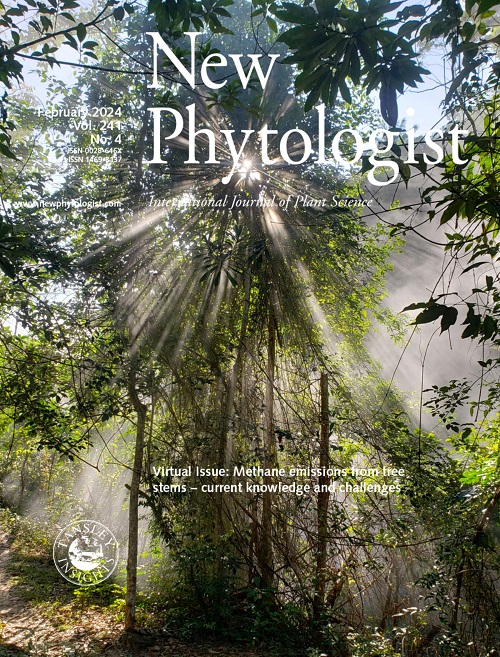地中海松生长的可塑性在遗传上是可变的,并且在空间尺度上高度保守
IF 8.1
1区 生物学
Q1 Agricultural and Biological Sciences
引用次数: 0
摘要
表型可塑性是固着生物应对环境变化的主要机制。可塑性是基于遗传的,可以在自然选择下进化,因此一个物种内的种群对环境表现出不同的表型反应。一个仍然难以捉摸的重要问题是,在不同的空间尺度上,可塑性的种内变异是否相互独立。为了测试可塑性的变化与宏观和微观环境变化之间是否相互关联,我们使用了在西班牙西北部七个野外常见花园中建立的25个松种群的生长数据。各试验场地对宏观环境变化的表型可塑性进行了估计,而对微观环境变化的可塑性则通过使用半变差法和克里格法对场地内异质性建模进行了估计。我们提供了人口之间对微观和宏观环境变化的塑性反应幅度变化的经验证据。重要的是,我们发现这种反应在空间尺度上呈正相关。在一个环境变化尺度上选择可塑性可能会影响其他尺度上可塑性的表达,对种群缓冲气候变化的能力产生重要影响。这些结果提高了我们对表型可塑性表达背后的生态驱动因素的理解。本文章由计算机程序翻译,如有差异,请以英文原文为准。
Plasticity in growth is genetically variable and highly conserved across spatial scales in a Mediterranean pine
- Phenotypic plasticity is a main mechanism for sessile organisms to cope with changing environments. Plasticity is genetically based and can evolve under natural selection so that populations within a species show distinct phenotypic responses to environment. An important question that remains elusive is whether the intraspecific variation in plasticity at different spatial scales is independent from each other.
- To test whether variation in plasticity to macro- and micro-environmental variation is related among each other, we used growth data of 25 Pinus pinaster populations established in seven field common gardens in NW Spain. Phenotypic plasticity to macro-environmental variation was estimated across test sites while plasticity to micro-environmental variation was estimated by using semivariography and kriging for modeling within-site heterogeneity.
- We provide empirical evidence of among-population variation in the magnitude of plastic responses to both micro- and macro-environmental variation. Importantly, we found that such responses were positively correlated across spatial scales.
- Selection for plasticity at one scale of environmental variation may impact the expression of plasticity at other scales, having important consequences on the ability of populations to buffer climate change. These results improve our understanding of the ecological drivers underlying the expression of phenotypic plasticity.
求助全文
通过发布文献求助,成功后即可免费获取论文全文。
去求助
来源期刊

New Phytologist
PLANT SCIENCES-
CiteScore
17.60
自引率
5.30%
发文量
728
审稿时长
1 months
期刊介绍:
New Phytologist is a leading publication that showcases exceptional and groundbreaking research in plant science and its practical applications. With a focus on five distinct sections - Physiology & Development, Environment, Interaction, Evolution, and Transformative Plant Biotechnology - the journal covers a wide array of topics ranging from cellular processes to the impact of global environmental changes. We encourage the use of interdisciplinary approaches, and our content is structured to reflect this. Our journal acknowledges the diverse techniques employed in plant science, including molecular and cell biology, functional genomics, modeling, and system-based approaches, across various subfields.
 求助内容:
求助内容: 应助结果提醒方式:
应助结果提醒方式:


